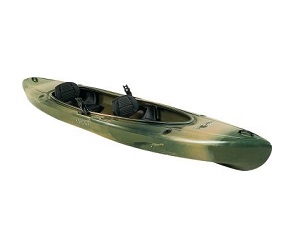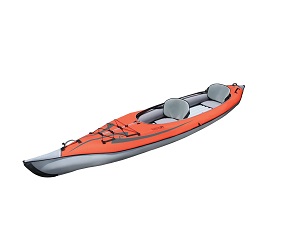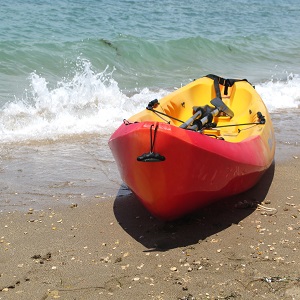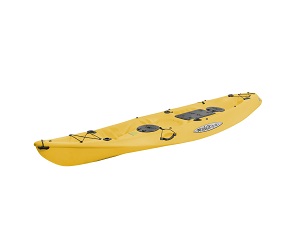Drifting down a gentle river in the summer breeze, exploring untouched wilderness, sea kayaking with dolphins – it’s easy to see why kayaking is such a popular sport. If you have been kayaking for a while, you will come across a big problem that all kayakers face: how to get your kayak to the lake or river.
The most popular solution to the issue is to tie the yak on top of your car or truck using one of the many products available for this purpose. Foam blocks are often used for short trips in good weather. The better choice is a roof rack which is more expensive but is more secure and much easier to use. They often provide a tighter grip so your kayak doesn’t come flying off the car during windy conditions or during long trips. Roof racks can be used for more than just kayaks and are also popular for transporting skis, bicycles, surfboards and luggage.
Kayak Racks

Rooftop kayak racks begin with a base that is made from two horizontal metal bars that attach to the top of the car or truck. The roof racks are then fastened to the bars. The metal bars can be fitted to a variety of factory style racks including raised side rails and naked rooftops. Some roof racks are made for specific vehicle models. The base system can be attached to the roof of your vehicle yourself or you can get a custom base that is installed by the manufacturer.
After you have installed your roof rack, you need to choose the right equipment to secure your kayak to the rack. One popular method is by using a saddle. Saddles are small padded squares that attach to the roof rack and hold snug against the bottom of the yak. They are easy to install and provide a secure ride for the kayak. You should place a pair on the front of the rack and a pair on the back bar. Rollers can be installed right behind the back bar so you can lift the boat onto the rollers and move it into position. You will even be able to load your kayak yourself without any help. One bad thing about rollers is that you need a longer vehicle so the kayak doesn’t shift during transport.
Another option is by using j-cradles. J-cradles are j-shaped padded bars that secure the sides of the kayak. The sides of the yak are stronger than the bottom so the plastic will be less likely to bend. The great thing about j-cradles is that they allow you to haul more than one kayak at a time. J-cradles make it easy to load and unload your kayak because you lift the kayak off your car from the sides. A good lift can help you save your back by lifting the kayak off your vehicle for you.
What We Recommend: Inno Kayak Locking Carrier with Board Pads
Securing a Kayak

When you are driving to the lake, you do not want your kayak to fly off and cause an accident, nor do you want your yak to get damaged. The best way to prevent this from happening is by using the right equipment to secure you kayak the correct way and checking on the kayak periodically during the trip.
After you have gotten the kayak onto the roof of your vehicle, use foam to make sure any sharp areas of the roof rack does not rub against the kayak. When using foam pads, make sure the kayak is upside down. It should be right side up if you are using j-cradles or saddles. If you are loading it this way, be sure to cover the cockpit opening so it does not fill with water when it rains.
Attach the kayak to the car using two nylon-webbing straps with spring-loaded buckles. One strap should be placed on the rear of the roof rack while the other strap should be placed in the front. The two straps should be as far apart as possible. Fasten them so they are snug but do not over-tighten them. Make sure the kayak is not warping as that is something you do not want to happen. After you have fastened the straps, lift up on the yak and move it back and forth. It should be held tight against the roof rack and not shift at all. If it lifts up or moves easily, then tighten the straps some more.
Once the kayak is secure, you will need to tie down the bow and stern. Attach a rope to the front handle of the kayak and tie it under the front bumper of your vehicle. Do the same thing with the rear of the boat. The ropes should be able to keep the front and rear of the yak from flying up when you are driving. Tie off the loose ends of any rope or straps so they do not scratch up your kayak or car when flapping in the wind. After you have driven a few miles, you will want to pull over and check the kayak to make sure it is still secure and that the straps are tight.




